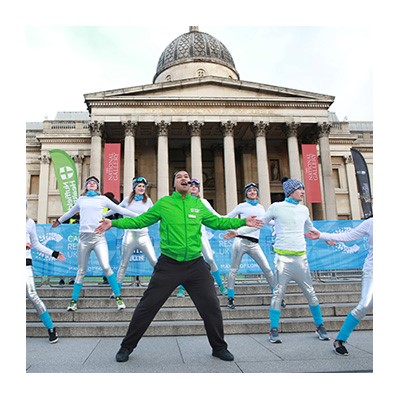Firstly, a huge well done and welcome from the Winter Run Team for making the decision to join us! We are very excited to have you on board.
If you are just starting out running and you’re wondering what the best strategy is to get you running consistently and maybe even with the aim of achieving a 10k, you’re in the right place!

To start with, check your footwear and clothing. If you start running in a grotty pair of trainers that haven’t seen daylight for a few years you could be at greater risk of sustaining an injury, not to mention uncomfortable blisters. Footwear is important not least to support your feet but the rest of your body and how you move, especially during a run. Do your research, speak to the running shoe experts, whatever style you choose, and there are a few; lightweight, cushioned, flat, barefoot, flexible etc.. choose something that works for you and your running needs.
Ladies – sports bras are a must! Ensure they are a perfect fit, functional and designed just right for you! Breast tissue can only withstand so much, to avoid discomfort and stress on the tissue, try different types and jump around to test them. You want to make sure nothing moves when you run!
There are a few other things to consider such as seam free socks and clothing but if you head to a good running shop you will find everything you need for all weathers.
So now you’ve got the right kit, we need to make sure you’ve got the right fuel for the energy you are going to need to get going. Check out this article by Event Partner Nuffield Health.

Now let’s get to the main event. Aim to complete three sessions per week to start with.
A good warm up of 10-15 minutes is essential to prepare the body for exercise. Warm ups should mimic the main exercise you are planning so for running a suitable warm up would be to walk and perform dynamic (moving) stretches for the legs, hips, core and to loosen the upper body. It is also important to practice deep breathing to give the diaphragm a little workout and to increase oxygen capacity in the lungs – you’re going to need it!
Check your posture and make sure you avoid leaning into your run as this will put extra pressure on your joints and make it harder for you. Start out slow and steady, nice and upright, ensuring your body is directly over your foot as it strikes the ground. Get into a regular breathing rhythm and relax. Tension in the body can cause injury and make your run uncomfortable. So just breathe, relax and go with the flow.

In your first session, after your warm up, run for two minutes, follow that with a 2 minute walk. Aim to do this a minimum of three times in your first session. If you can’t quite manage 2 minutes that’s ok, do what you can and build it up gradually from there. Look to increase the run time and reduce the rest time each session and pretty soon you’ll be putting it all together and running 30 minutes or more very comfortably.
It’s important not to over-do it in the early days. Even if you feel you could do more, your body needs time to adapt so don’t push yourself too hard but just enough to keep working and progressing.
Finish each session with a cool down (walk) and stretch all the muscles worked – for at least 10 minutes to return the body to normal. Remember to stay well hydrated throughout.
There are other areas to look at to help improve your running performance and endurance such as strength and interval training. These training principles will help you run further for longer, and will work for you whatever distance you want to achieve.
As with all things, to progress get out of your comfort zone and keep pushing yourself that little bit harder every time. Determination and motivation are needed in abundance. Just think of the hot chocolate and polar bear hugs you’ll be greeted with at the finish!
Good luck and we look forward to seeing you on event day!




